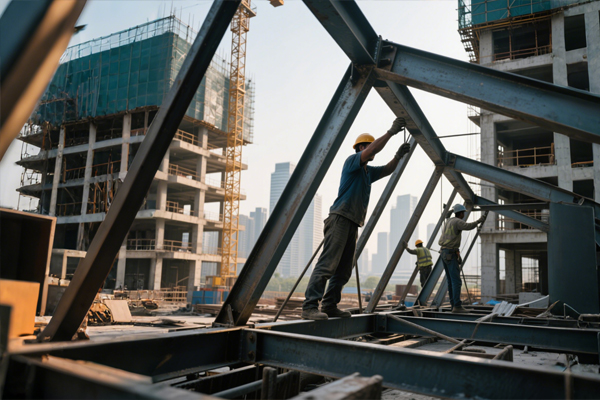What do we mean by the term mild steel?
For example, “green steel” is often seen. For some people, it is just a marketing term with neither definition nor scope. You can use it whenever you want. But others believe that “green steel” is a term that requires certification. To use this term, it must cover the entire scope of sustainable development.
Although these two groups of people are a bit extreme, how “green” does it need to be called “green steel”? Is the “green steel” I call “clean steel” or “zero carbon steel” what you call? Where exactly is the dividing line between “net zero carbon steel”, “zero carbon steel” and “low carbon steel”? … If these ambiguities are not resolved, it is not difficult to imagine where the discussion could end up.
“Low-carbon steel”
In 2021, although most steel products will still use fossil fuels as reducing agents for production, many steel companies have already or are developing some technologies that can significantly reduce the carbon emissions of core steel processes. They represent a new steel product series-low Carbon-emitting steel. For example:
- Thyssenkrupp AG and Nippon Steel have launched a series of tests on hydrogen utilization in blast furnaces with the aim of significantly reducing carbon dioxide emissions during steel production.
- Emirates Steel Company in the United Arab Emirates captures 800,000 tons of carbon dioxide every year from the carbon dioxide-enriched gas produced by iron-making plants, and then injects it into mature oil fields for permanent storage.
- HBIS Group, as a leading steel company in China, is building a hydrogen metallurgical direct reduced iron demonstration project with an annual production capacity of 1.2 million tons. The project will use green and blue hydrogen technologies to explore a zero-carbon emission route for the steel production process.
- ArcelorMittal is building a large facility in Ghent, Belgium, to convert exhaust gases from steel plants into ethanol. The converted ethanol can be used in a wide range of applications, including the production of synthetic fuels. In 2018, China’s Shougang Group began operating a similar commercial facility, producing 30 million liters of salable ethanol in the first year.
- The small steel plant built by Nucor Steel Company in Missouri, USA, is the first steel plant in the United States to use wind energy as energy. The plant is a cooperative project between Nucor Steel and local utility companies, and will supply electricity to the steel plant after both parties reach a power purchase agreement.
- Evraz Group’s Colorado-based Rocky Mountain Steel Co. is switching from coal to solar power. It will be the largest on-site solar farm in the country dedicated to serving a single customer.
- Brazilian Green Steel is using 100% charcoal to produce low-carbon emission steel products.
- Tata Steel is developing new melting smelting technology through the HIsarna project. HIsarna technology produces iron without the use of coke ovens or sintering facilities, and the resulting CO2-enriched gas is perfectly suited to CCS technology.
Steel produced using the above new technologies can be regarded as low-carbon emission steel, although with the dramatic changes in regulations, social expectations and technology, the meaning of “low carbon” today may be different from that of “low carbon” in 2050. There are different expressions in the industry and relevant institutions on how to call these steel products produced with new generation technology, which are listed below. worldsteel prefers the term “low-carbon steel”, as is the case with “low-carbon electricity”, as we believe this term is more intuitive and clear.
“Green Steel”
Returning to the question posed at the beginning of this article, “green steel” is also used and articulated by many groups, often when marketing new, more environmentally conscious products. It mainly refers to steel produced using breakthrough technologies, steel produced from scrap steel, reused and remanufactured steel, and traditional steel produced by purchasing carbon emission indicators or carbon sinks.



